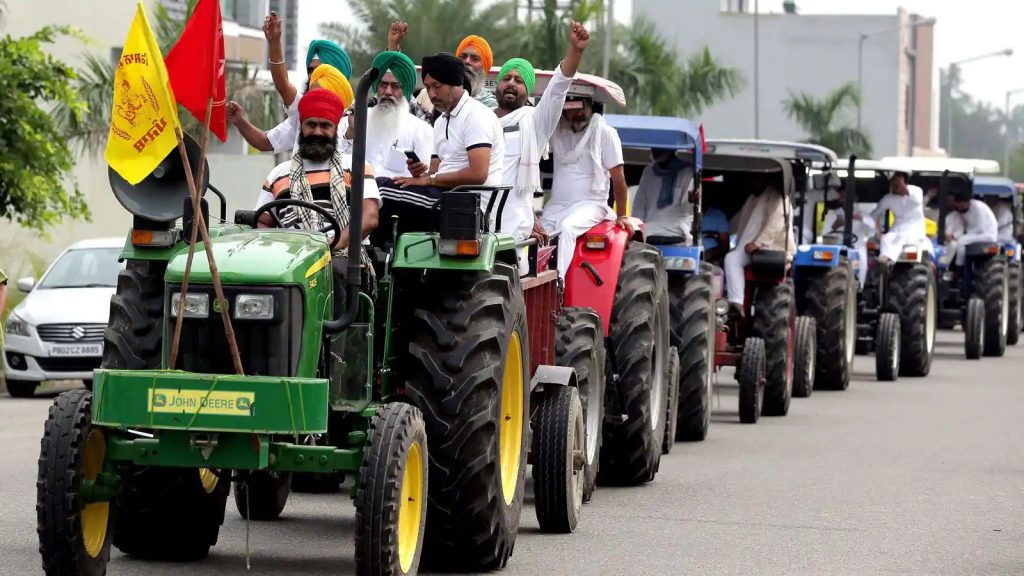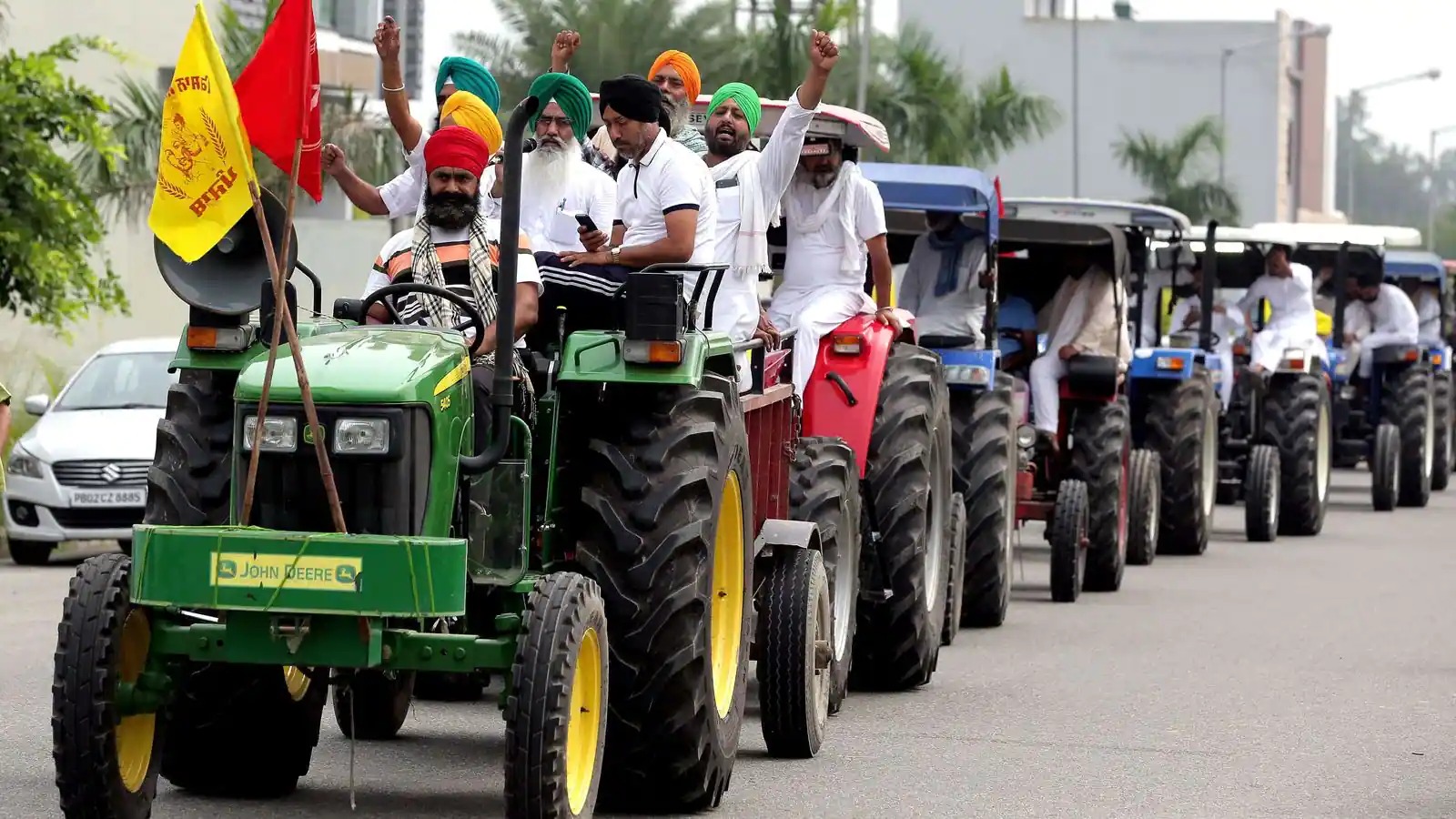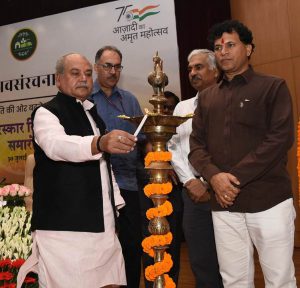Farmers are headed to Delhi again after a gap of two years with the demand for a guaranteed and higher minimum support price (MSP), in addition to other demands such as loan waivers, Rs 10,000 monthly pension for all farmers above 60 years, and India’s exit from WTO and free-trade agreements.
MSP has become the most prominent feature of the farmer protest. A farmer has to face risks on several counts such as weather, yield, price, government procurement system, etc. The government compensates the farmer, especially the farmer in Punjab which has been the food bowl of India, with subsidies on fertilisers, power, loans, etc. as well as providing an MSP mechanism.

MSP is the price at which the government purchases crops from the farmers, providing them with assured income for their produce. This price acts as a safety net for farmers, ensuring they receive a fair price for their crops, particularly during times of market fluctuations or when market prices fall below the MSP.
The shrill demand for more and guaranteed MSP will make anyone believe that all the agriculture in Punjab and its farmers need is higher and guaranteed prices from the government for crops for prosperity. But agriculture in Punjab is struggling with several structural issues for which guaranteed MSP can’t even be a temporary fix let alone a solution. On the contrary, it will keep worsening the situation. The crises that besiege agriculture in Punjab rarely get so much play from farmer unions as MSP. That’s short-sightedness which can turn out to be dangerous for farmers in the long term.
The mega crisis that remains hidden
The biggest problem Punjab agriculture faces today is desertification. Plunging water tables are turning fertile land into desert. According to a Punjab government report published in 2018, groundwater in about 79% of the state’s area is over-exploited, and groundwater resources are likely to be used up completely by 2039, following which only annual replenishable resources will be available for consumption.
In 2020, the Central Ground Water Board conducted a block-wise assessment of groundwater resources in Punjab. As per the report, out of 150 blocks assessed, only 17 blocks were found to have groundwater levels in the “safe” zone. As many as 133 blocks had “over-exploited” groundwater resources, of which at least six were in the “critical” zone.
As per the parameters of the Central Ground Water Board, “safe” means less than 70% of the groundwater resources have been extracted and “critical” means more than 90% has been extracted.
Punjab’s groundwater in the first 100 metres – which is often called the “good quality” mark – is likely to get exhausted by 2029. And by 2039, it shall drop below 300 metres – a level at which the quality of water is too contaminated to be used for anything.
Punjab fast turning into a desert is the elephant in the room while the discourse on agriculture is dominated by higher MSP and more subsidies, the factors that led to the depletion of groundwater in the first place.
For decades, experts as well as the government have emphasised the need to break out of the wheat-paddy cycle, a vicious cycle for Punjab agriculture. Paddy is a water-guzzling crop that thrives on subsidised power needed to pump out ground water with tubewells.
The wheat-paddy cycle and subsidies are remnants from the days of the Green Revolution when Punjab became the food bowl of the country. But when India is no longer grain-defficient and other states such as Madhya Pradesh vie with Punjab in wheat production, Punjab is still stuck in the wheat-paddy cycle. If the status quo persists, a large area in Punjab will turn into a desert unsuitable for most crops. Since subsidies, higher MSP, loan waivers, etc. are seen as easy fixes for Punjab’s agriculture
crisis marked by suicides by thousands of indebted small farmers, farmer bodies as well as governments focus on these instead of fixing the structural problems with a long-term impact. This status quo is dangerous for Punjab as well as its farmers.
Unruly farmers heading towards Delhi might appear unreasonable and politically motivated, but what lies behind constant unrest among Punjab farmers is not just politics but sustained policy failure. What worked during the Green Revolution, when India sought to create self-sufficiency in agricultural production and incentivised farmers to produce more and more of wheat and paddy, no longer works now when India is food surplus. But governments or farmer leaders have no will or courage to take the bull by the horns. That’s why public discourse on Punjab agriculture always centres on easier and instantly addressable issues such as higher procurement prices and freebies.
What is the solution?
From time to time, experts suggest crop diversification so as Punjab breaks out of the wheat-paddy cycle which is bringing its water table down and prevents farmers from getting remunerative prices for their produce. But there is little consensus on how it can be done. Farmer-dominant Punjab politics makes it difficult for any political party to introduce any radical structural change. The very mention of doing away with power subsidies sends a shiver down the spine of the politician .
Diversification via MSP and subsidies is impossible due to lack of institutional capacity. The government cannot buy all kinds of crops and store them. Over decades, Food Corporation of India has gained notoriety for grains rotting in its storage.
Only heavy investment in storage and processing of agricultural produce can support any substantial and meaningful diversification of crops. This investment can come only from the private sector which can build factories, cold chains and storages at large scale. That brings us back to the three farm laws which had brought angry farmers to Delhi two years ago. While the Central government tried to push ambitious restructuring of farming in Punjab, farmers did not believe the government. They have got to used to
subsidies and selling to the government, they doubted if the private scetor will give them a fair deal. They also feared the government support mechanism will suddenly vanish, leaving them to the mercy of corporates who will then be there only option. Despite strong assurances by the government and many sane voices from experts such as Punjab’s star agro-economist Dr. SS Johl, farmers rejected the reforms.
Farmers have come to believe that they are best protected by freebies and state support which are also the route to higher incomes. The need now is not to perpetuate the status quo by doling out more subsidies or guaranteed prices but to forge a consensus on the long-term solutions for Punjab’s agriculture which stares at a waterless future. The biggest victims of this crisis are going to be Punjab farmers themselves. But after the Central government burnt its hands with the farm laws it was for forced to repeal, politicians are not likely to step up.
Visit us – http://www.kisansabha.in now !!!





